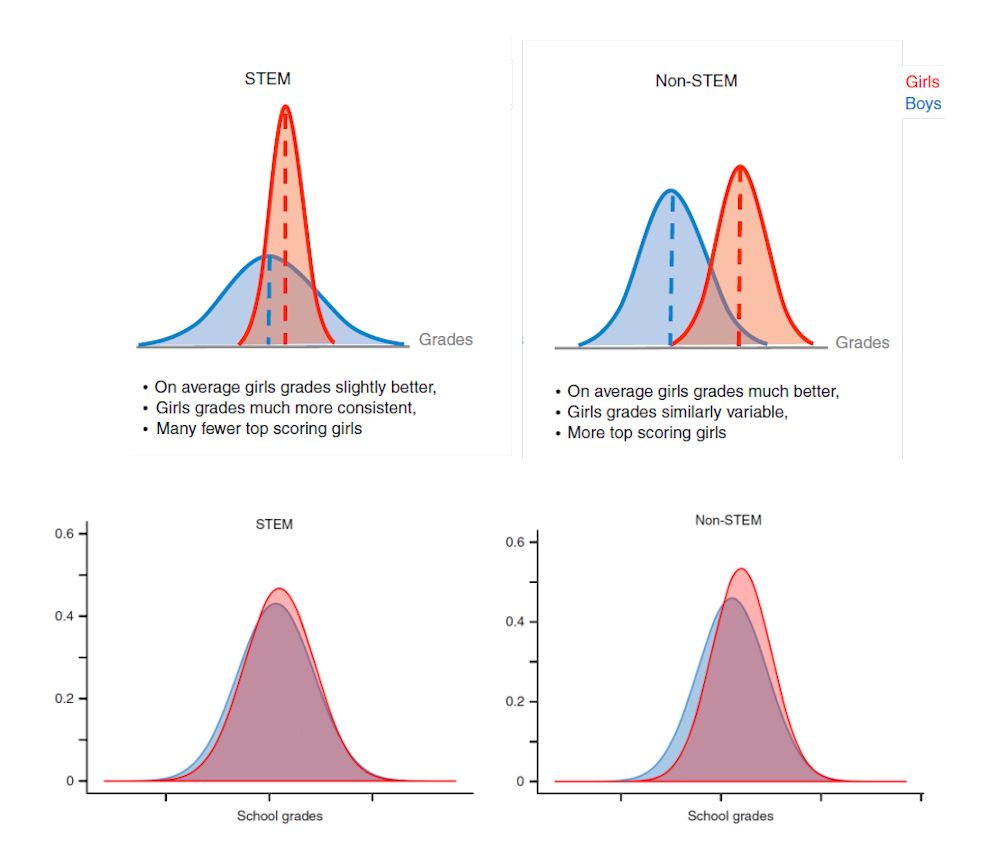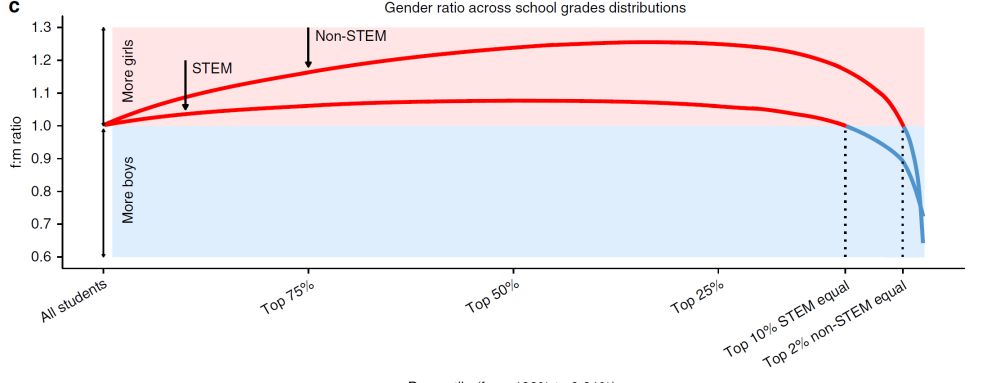
Girls are better at stem subjects than boys, and yet...
In STEM subjects (science, technology, engineering and mathematics), girls perform slightly better than boys, according to research into the school grades of 1.6 million pupils. The idea that the cleverest boys outrank girls, which results in girls not following STEM courses, turns out to be wrong.
It has already been established that girls perform better than boys at school on average, based on an analysis of exams at the end of primary school (such as CITO in the Netherlands). At the same time, however, it was striking that there were more exceptional boys than girls. That could explain why girls are less likely to decide to follow a STEM course than boys: the superstar boys intimidate them, perpetuating the idea that boys are better than girls, so girls tend to take a path with less male competition.
Australian researchers at the University of New South Wales looked closely at this hypothesis, but studied school grades rather than exam scores. According to the researchers, these grades play a much larger role in what students ultimately choose than a one-off exam at the end of primary school. The study looked at the school grades of 1.6 million pupils, from the age of six until the end of secondary education. The data was taken from over 200 previous studies on school performance, most of which were carried out in North America.
No great variation
The study revealed a surprising result: girls achieve slightly better school grades in STEM subjects than boys, and there is hardly any difference between the best girls and the best boys. The researchers therefore concluded from the school grades that there are not more outstanding boys: girls have every reason to think that they are just as smart, if not smarter, than boys.
In non-STEM subjects, the differences between girls and boys are much clearer: girls perform better on average, and there are also many more outstanding girls than boys in these subjects.

Exceptional in non-stem
The latter could partly explain why girls more often opt for a non-STEM course: they know that they are better at these subjects than boys, and choose a career path where they can expect less competition. In an interview on the university website, researcher Rose O'Dea says the following on this. 'Say you're a girl and a straight A student. In your maths class, you’re surrounded by top-achieving boys, while you're the star of your English class. In that case, non-STEM can look like an easier option or a safer path.'

Prejudices
Stereotypical views about what girls can and can’t do also play a role, according to O’Dea. Girls are susceptible to conforming to stereotypes in the traditionally male-dominated fields of STEM. Girls who try to succeed in these fields are often faced with setbacks.’
As an example, she mentions the stereotype that girls are not so good at maths. ‘This stereotype actually makes it harder for girls to be good at maths, both because of the way we perceive ourselves and the way other people perceive us. We all have these kinds of prejudices, and it is more difficult to break them if you are reminded of those prejudices. If we want more girls to choose a STEM course, then we will have to make these more appealing to girls.’ The interview does not state how this should be done.
If you found this article interesting, subscribe for free to our weekly newsletter!






